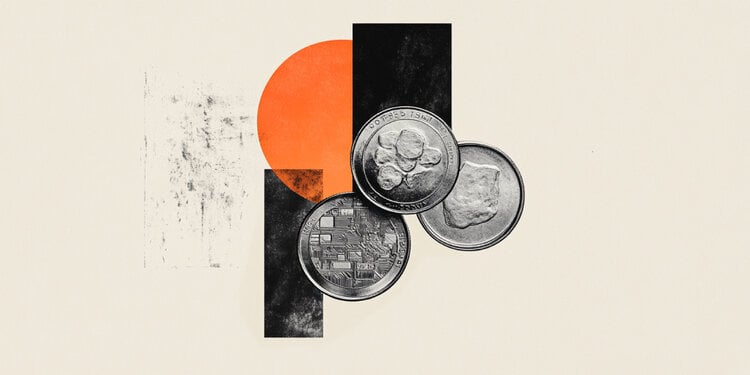Kidney cancer: it cannot be said that it is a pathology unknown to the Italians, They know symptoms and characteristics, but then there is a lot of confusion on which the reference doctor is to consult and what the correct path to be taken can be on. These are the data that emerge from the investigation, conducted byPiepoli Research Institute on a sample of 1,000 individuals representative of the Italian population, presented with the campaign “Side by side. United against kidney carcinoma “promoted by MSD with the patronage of the Italian Society of Urology (Siu) and the association of anti -anture patients.
Rene tumor, the situation in Italy
Renal carcinoma affects about 13 thousand people every year and affects almost 155 thousand Italians who coexist with a diagnosis (Source: Aiom, Cancer numbers 2024). Patients for whom, in recent years, new opportunities for diagnosis and treatment have emerged, as long as they follow an adequate path and turn to the appropriate specialist. And it is precisely on these aspects that the investigation brings out the poor knowledge of Italians. In fact, 92% of the interviewees say they do not know a center of excellence for the treatment of kidney cancer, almost half erroneously believes that the reference figure is the nephrologist, against a 43% that indicates the oncologist and the urologist 35%, to demonstrate a confusion in roles.
From the aforementioned investigation, it emerges that almost half of the interviewees know the kidney cancer, but having only a vague idea based mainly on TV and word of mouth, while only a third (32%) spontaneously recognizes risk factors related to an incorrect lifestyle, such as smoke and nutrition. The main gaps of the Italians emerge, however, when a path of diagnosis and care: in this area, Surgery is indicated as a treatment for kidney cancer by 46% of interviewees, 33% cite robotic surgery, Although less than half recognize the advantages of this method.
Oncologist and urologist, reference doctors to consult in case of kidney cancer
Given the general picture, an in -depth analysis was necessary with the Two reference medical figures to be asked in the event of a neoplasm to the kidneyto clarify and also to understand in which direction it is moving to scientific research in this area. We thus asked the Dr. Andrea MinerviniFull professor of Urology at the Department of Experimental Medicine and Clinic University of Florence and Director of the SOD of Mini-invasive and andrological oncological Urology of the University Hospital Careggi (FI), and the Dr. Roberto Iacovelli, Associate Professor of Medical Oncology at the Catholic University of the Sacred Heart and Medical Oncologist UOC Oncology Incology Comprehensive Cancer Center Polyclinic Foundation A. Gemelli IRCCS in Rome.
Rene tumor: what are the symptoms?
Ri: «Rene tumor is a silent cancer: in 90% of cases, the diagnosis is incidental, That is, the patient makes an ultrasound for another disorder and so, it turns out that a mass has grown in the kidney pelvis. Can be recognized common symptoms, such as an escrescent mass in conjunction with the organs concerned, abdominal pain or blood in the urine, But when these symptoms appear, it means that neoplasm, which usually grows internally to the pelvis, has increased in size To the point of overcoming the Grasso Pannolo that covers the kidneys, going to touch other surrounding innervated structures, those that then report the annoyance, alarm bell that something is wrong ».
We can therefore call it a silent tumor …
Ri: «It is. In 20% of patients, the diagnosis is of an advanced neoplasm, therefore the first step is to understand if cancer has a tendency to form metastases and with a CT, understand if it is located only in the kidney interested directly. In this case, the way to be undertaken is Contact a urologist, to surgically remove the mass and clean up the affected area. I specify that even if neoplasia was metastatic, it is not said that The surgical approach is to be excluded, indeed: It is the most recommended therapy».
And here, she comes into play, Professor Minervini … why a urologist and not a nephrologist?
AM: «The Nephrologist is the reference specialist in case of functional kidney diseases; We urologists, on the other hand, is the kidney surgeons. And as Professor Iacovelli said, surgery is the way to take, without fear, for a very simple reason: Today the trend is to keep the part of healthy kidney, so it will opt in most cases for partial and not total nephrectomy. Until a few years ago, we proceeded with the total removal of the organ, today not, and here is the great news: With the preservation of the part of healthy organ, the average life of the patient stretches significantly, because it completely removes a organ, means determining renal failure. The work remains against the only remaining kidney, this tires the body in its entirety, and has been scientifically demonstrated that patients remained with a single kidney report a higher risk of getting cardiovascular diseases, such as stroke or heart attack».
This is already an important fact: is there another one in support of the fact that today kidney surgery is the right path as a therapy for a renal neoplasm?
AM: «The technical and technological advancement of surgery itself: we have gone from surgery to cutting to robotic, always with a view to preserving the healthy organ as much as possible. Robotic surgery is highly precise, and little invasive surgery. Do you think that in case of tumors up to 7 cm of mass, today there is the indication to remove only the tumor mass, and 7 cm are not few. This means keep almost 80% of the kidney alivean incredible result. Having realized that Careggi, where I work, preserve the organ in 90% of patients. And this is fundamental: Having a kidney and a half means that if the whole kidney gets sick, you can significantly lower the risk of going on dialysis».
And after the surgery, what are the next steps?
Ri: «After the operation, we proceed with the histological examination of the carcinogenic tissue to understand its aggression and extension. Beninth, surgery does a lot, but does not always guarantee the total healing of the patient: statistically, The disease can return in 30-40% of patients, the more extended and aggressive the tumor diagnosed. But understood what kind of cancer it is, You can proceed with preventive drug therapy: follow an immunotherapy – associated with other drugs, called angiogenesis inhibitors, that is, that they go to block the formation of new blood vessels in cancer cells, hungry – For a year post operation, it can reduce the risk that the disease can be recurred. Immunotherapy, in essence, helps the immune system to do what it has always been planned for, that is, to beat and kill sick cells ».
To conclude, what is the life expectancy today in an operated renal oncological patient?
AM: «In the case of localized kidney cancer, survival can be 80%a fact that varies a lot depending on aggression. Many patients heal after the operationbut what matters is to be followed by the right specialists in the right research and care centers ».
Side by side. United against kidney carcinomathe information campaign
The campaign Side by side. United against kidney carcinomalaunched in 2023, has already reached millions of people thanks to a targeted social communication and a website (www.tumoredelrene.it) which offers detailed and scientifically validated information, as well as practical advice to support patients and caregivers.
“The patient’s evaluation must be made in centers of excellence, that is, centers where the best take -over charge is guaranteed with a close interaction between urologists, oncologists, radiologists and anatomo -pathologists – he explains Giuseppe CarrieriPresident of the Italian Society of Urology (Siu) – A useful project to orient themselves in this context is the “Orange sticker”, a recognition, promoted by Siu, that Among the respondent centers, identify those who offer cutting -edge treatments and services dedicated to prevention, diagnosis and care. The bollin attribution criteria guarantee an integrated approach based on scientific evidence and on the most recent international guidelines, thus improving the quality of care for patients “.
Source: Vanity Fair
I’m Susan Karen, a professional writer and editor at World Stock Market. I specialize in Entertainment news, writing stories that keep readers informed on all the latest developments in the industry. With over five years of experience in creating engaging content and copywriting for various media outlets, I have grown to become an invaluable asset to any team.







